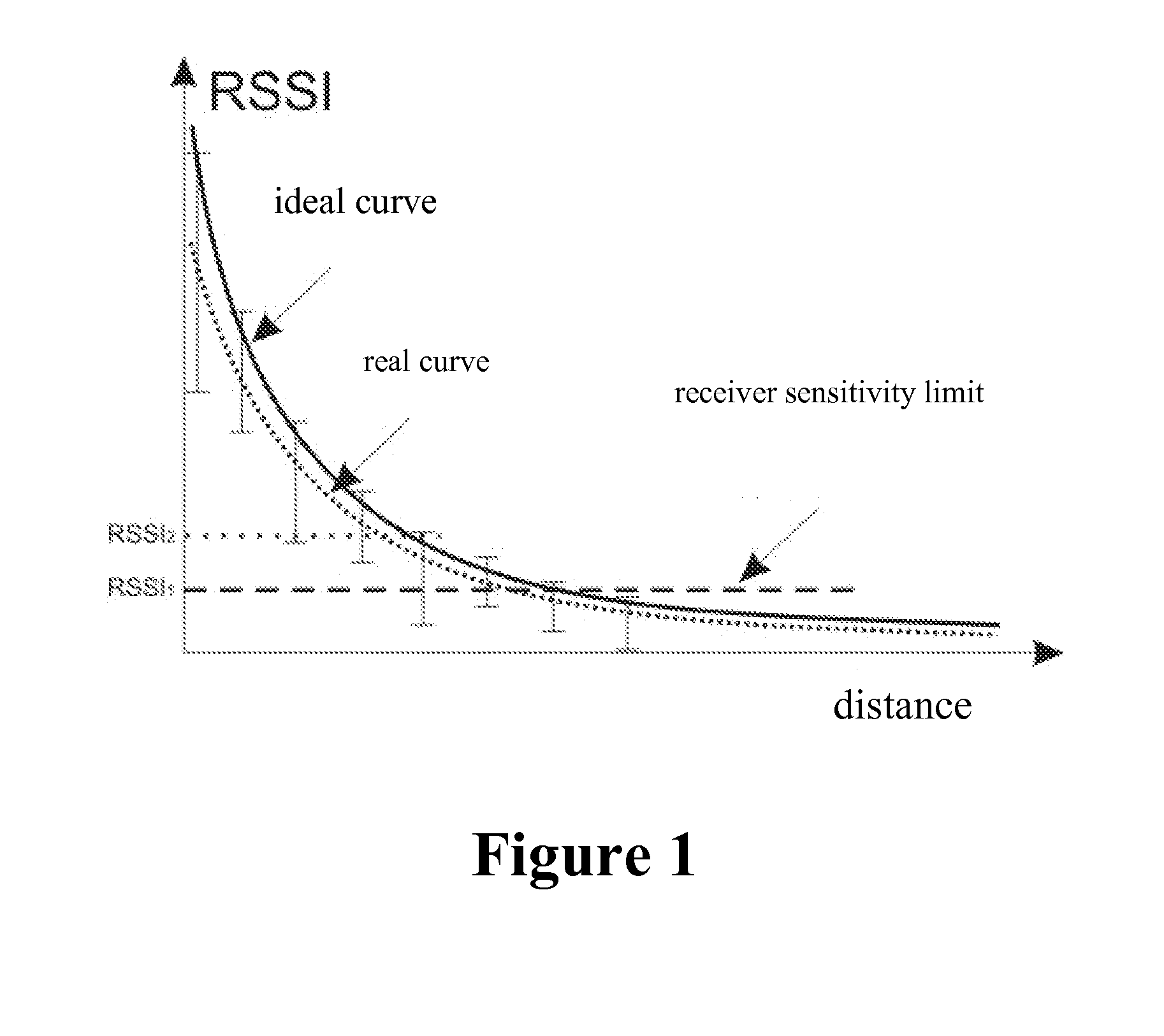Method for locating a radio center and system for locating a radio center and data processing unit
a radio center and data processing technology, applied in the field of wireless radio communication, can solve the problems of high equipment cost, unpredictable fluctuations in radio signal strength, system cannot be used for third-party control of radio center movement, etc., and achieve the effect of reducing energy consumption, accurate localization, and reducing the frequency of measurements
- Summary
- Abstract
- Description
- Claims
- Application Information
AI Technical Summary
Benefits of technology
Problems solved by technology
Method used
Image
Examples
example 2
[0153]Radio center localization system, as shown in FIG. 11, works as follows.
[0154]the RCKL (3) and radio centers measure radio signal propagation time using the TM and one of the TOF methods. Using the known radio signal propagation time and TM (14), the distance between the radio center and RCKL (3) is calculated. The overlapping area is calculated for the circles with centers in the RCKL (3) and radii equal to the calculated distance; then, the localization precision is calculated according to a predetermined by the TM (10) correlation. Possible locations of the radio center are calculated taking into account the distances computed by the LC (20). Possible displacement of the radio center is calculated using the MC (9), given its preset speed limit and the length of time between successive localization points. Parameters of the object's motion are calculated by MMPR (7) (eg, magnetometer, accelerometer, speedometer, odometer, tachometer). Radio signal strength from the said radi...
example 3
[0156]FIG. 4 clearly shows how the accumulation of localization points of an immobile radio center can improve accuracy. Black dots indicate points, whose location is known in advance (A, B and C), circle number 1 is the estimated location of the mobile center after the first cycle of measurements (in the area of the overlap of all three circles), circle number 2 is the corrected location of the mobile center after adjusting the radius from center A (the corrected radius is shown by the dashed line).
[0157]When speed and / or acceleration of the radio center and change of the radio signal strength are below the threshold, the minimum value is selected (R+dR)min from a series of consecutive values for each pair—radio station / RCKL:
R+dR1,R+dR2, . . . ,R+dRn,
[0158]where dRi is the overestimation of the i-th measurement of the true distance R
[0159]of the measured distances between the radio center and the RCKL for the radio center immobility period. Since the true distance between the immob...
example 4
[0161]In one particular case of implementation, the presented method is used with the system containing radio centers, RCKL and the controls and data processing equipment (CDPE), as shown in FIG. 6, where positions 1-6 indicate the following: controls server, switching, data acquisition and processing (1), the switch (2), RCKL (3), radio center (4), the World Wide Web (5) and coverage area of RCKL (6).
[0162]Radio centers may occasionally leave the state of low power consumption and transmit a radio signal that is received by many RCKL, which cover the area where the radio center is located. RCKL are connected into a single information environment through wired or wireless telecommunications network. Radio signals' data is transmitted over the said network to the said CDPE.
[0163]CDPE selects a RCKL and starts the process of distances measurement by the presented method using the selected RCKLs (applicable for the radio center in question). During this, the first radio center comes ou...
PUM
 Login to View More
Login to View More Abstract
Description
Claims
Application Information
 Login to View More
Login to View More - R&D
- Intellectual Property
- Life Sciences
- Materials
- Tech Scout
- Unparalleled Data Quality
- Higher Quality Content
- 60% Fewer Hallucinations
Browse by: Latest US Patents, China's latest patents, Technical Efficacy Thesaurus, Application Domain, Technology Topic, Popular Technical Reports.
© 2025 PatSnap. All rights reserved.Legal|Privacy policy|Modern Slavery Act Transparency Statement|Sitemap|About US| Contact US: help@patsnap.com



